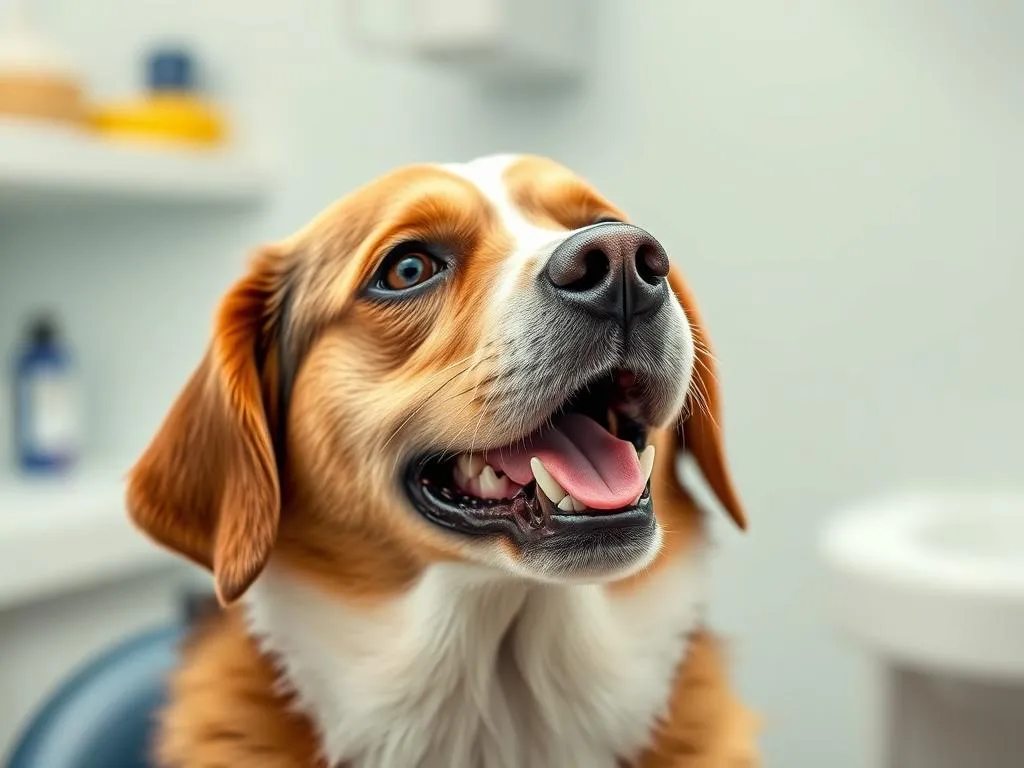
Good dental health is crucial for your furry friend’s overall well-being. Just like humans, dogs require regular dog dental care to avoid serious health issues. Maintaining your dog’s oral hygiene can prevent painful conditions and expensive veterinary bills. Here, we delve into everything you need to know about dog dental care, from the anatomy of a dog’s mouth to effective brushing techniques and common dental issues.
Understanding Dog Dental Health
Anatomy of a Dog’s Mouth
A dog’s mouth is an intricate structure designed for various functions. Dogs have four main types of teeth, each serving a unique purpose:
- Incisors: These are the small teeth at the front of the mouth. They help dogs nibble and grasp food.
- Canines: The pointed teeth next to the incisors are crucial for tearing food and are often referred to as “fangs”.
- Premolars: Located behind the canines, these teeth are used for grinding food.
- Molars: Found at the back of the mouth, molars also assist in grinding, especially for larger or tougher food items.
Understanding this anatomy helps in recognizing how essential each type of tooth is in a dog’s diet.
Common Dental Issues in Dogs
Despite their importance, dental health can often be neglected. Here are some common dental issues that can affect dogs:
- Periodontal Disease: This is a serious infection of the gums that can lead to tooth loss if left untreated. It’s caused by plaque buildup.
- Tooth Decay: While less common in dogs than in humans, it can occur, especially if a dog consumes too many sugary treats.
- Tartar Buildup: This hard substance forms when plaque hardens. It can lead to more severe dental problems.
- Bad Breath (Halitosis): Often a sign of underlying dental issues, bad breath can indicate that your dog needs dental care.
Signs of Dental Problems in Dogs
Being proactive about your dog’s dental health means recognizing the signs of dental problems early. Watch for these indicators:
- Behavioral Changes: If your dog is suddenly reluctant to eat or shows signs of discomfort while chewing, it could indicate a dental issue.
- Physical Signs: Swollen gums, loose teeth, and excessive drooling are red flags that warrant a vet visit.
- Importance of Regular Dental Check-ups: Regular veterinary check-ups are vital for catching potential dental problems before they escalate.
Importance of Dog Dental Care
Health Implications
The health of your dog’s mouth is linked to their overall well-being. Poor oral hygiene can lead to bacteria entering the bloodstream, potentially affecting vital organs such as the heart and kidneys. This connection highlights the importance of maintaining good dog dental care practices to safeguard your pet’s health.
Cost of Poor Dental Care
Neglecting your dog’s dental health can be a costly mistake. Untreated dental issues can lead to more severe conditions that require expensive veterinary interventions. For example, periodontal disease may necessitate surgery if it progresses too far. Investing time and money into routine dog dental care can save you from significant financial burdens down the line.
Dog Dental Care Routine
Daily Oral Hygiene Practices
Establishing a daily oral hygiene routine is essential for maintaining your dog’s dental health.
- Brushing Teeth: It’s important to brush your dog’s teeth regularly. Aim for at least two to three times a week, or ideally every day.
- Choosing the Right Products: Use a toothbrush designed for dogs and toothpaste specifically made for them. Human toothpaste can be toxic to dogs, so always opt for pet-friendly options.
Professional Dental Cleanings
Professional dental cleanings are another essential part of your dog’s dental care routine.
- What to Expect: During a veterinary dental cleaning, your dog will receive a thorough cleaning under anesthesia. This allows the vet to remove tartar and plaque buildup that regular brushing can’t reach.
- Frequency: Most veterinarians recommend professional cleanings at least once a year, but some dogs may require them more frequently based on their dental health.
Home Dental Care Products
In addition to brushing, consider incorporating other products into your dog’s dental care routine:
- Dental Chews and Treats: Look for dental chews designed to reduce plaque and tartar buildup. Brands that offer veterinary-approved options are ideal.
- Water Additives: These can be added to your dog’s drinking water to help control plaque and bad breath.
- Dental Toys: Toys that promote chewing can also help clean your dog’s teeth. Look for those designed to be safe for dental health.
Dietary Considerations
Your dog’s diet can have a significant impact on their dental health.
- Role of Diet: Feeding your dog high-quality kibble can help reduce plaque buildup. Chewy, moist, or soft foods may not provide the same dental benefits.
- Foods to Avoid: Avoid feeding your dog sugary snacks and human food that can contribute to dental problems.
Tips for Brushing Your Dog’s Teeth
Preparing Your Dog
Getting your dog accustomed to the brushing process is key to successful dog dental care.
- Getting Comfortable: Start by letting your dog sniff and lick the toothbrush. Gradually introduce the toothpaste.
- Introducing Brushing: Begin with short sessions, gradually increasing the duration as your dog becomes more comfortable.
Step-by-Step Guide to Brushing
Follow this detailed procedure for effective brushing:
- Choose a Quiet Time: Pick a moment when your dog is calm.
- Positioning: Sit or kneel beside your dog, keeping them steady.
- Apply Toothpaste: Place a small amount of dog toothpaste on the brush.
- Brushing Technique: Gently brush in circular motions, focusing on the outer surfaces of the teeth.
- Timing: Aim for at least two minutes of brushing to ensure thorough cleaning.
Overcoming Challenges
Brushing your dog’s teeth may come with challenges. Here are some common issues and potential solutions:
- Resistance: If your dog resists brushing, try using a finger brush or introducing it gradually.
- Anxiety: If your dog shows anxiety, create a calm environment and use positive reinforcement, such as treats and praise.
Frequently Asked Questions (FAQs)
How often should I brush my dog’s teeth?
Brushing your dog’s teeth ideally should be done daily. However, if daily brushing is not feasible, aim for at least two to three times a week.
Can I use human toothpaste for my dog?
No, you should not use human toothpaste for your dog. It can contain ingredients that are toxic to dogs. Always use toothpaste specifically formulated for pets.
What are the signs of gum disease?
Signs of gum disease in dogs include red or swollen gums, bleeding while eating or brushing, bad breath, and loose teeth.
Are certain breeds more prone to dental issues?
Yes, smaller breeds like Dachshunds and Chihuahuas are often more prone to dental problems due to their smaller mouths and crowded teeth.
How can I tell if my dog is in dental pain?
Signs that your dog may be experiencing dental pain include reluctance to eat, excessive drooling, pawing at the mouth, and changes in behavior such as irritability.
Conclusion
Maintaining your dog’s dental health is an essential aspect of being a responsible pet owner. Regular dog dental care not only helps prevent serious health issues but also enhances your dog’s quality of life. Remember to incorporate brushing into your routine, schedule professional cleanings, and provide appropriate dental products. By taking these steps, you can ensure a healthy mouth and a happy dog.
Make dental care a priority in your dog’s life, and enjoy the benefits of a healthier, happier companion!









